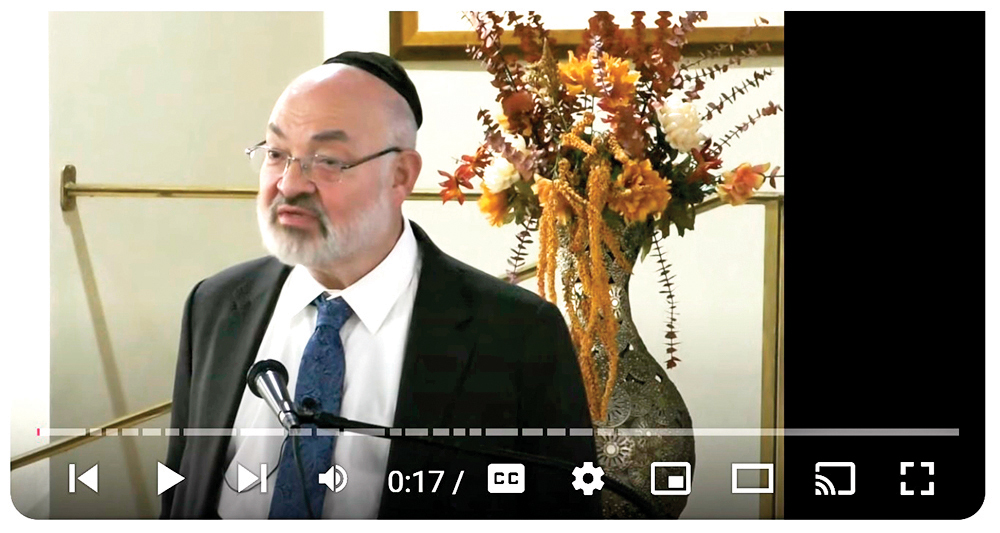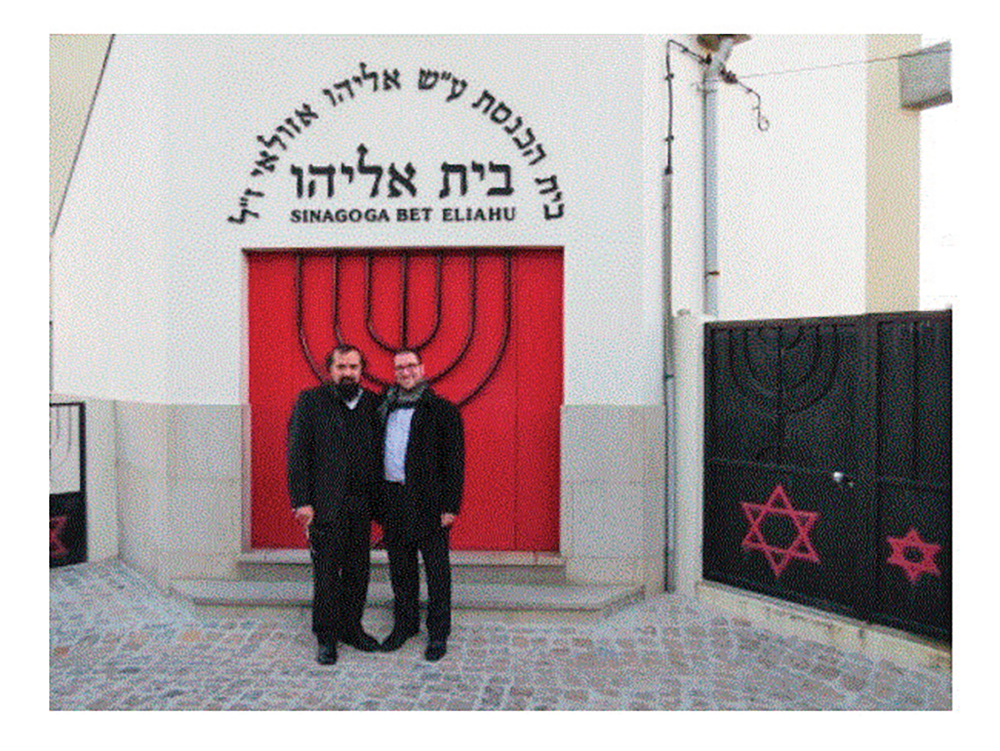
Tisha B’Av’s liturgy recalls the horrors unleashed on Jews worldwide, beginning with the churbanot of the Batei Mikdashim. Throughout history, nations that sheltered the Jews waxed, but when they turned oppressors, many of them waned. Seen through this prism, the Jews’ expulsion from Spain on Tisha B’Av, 1492, may well have catalyzed Spain’s and later, Portugal’s decline as major European powers and cultural and scientific epicenters.
This article, however, centers not on these countries as superpowers but on the challenges faced by Spanish and Portuguese Jewry, pre-during-and-post expulsion. It will conclude by referencing scholars and media-savvy individuals who have made this era accessible to wider audiences. Ashkenazy-focused history has mostly dominated Jewish learning, and yet the backstory, hardships, and contributions of Iberian Jewish communities are noteworthy.
On a Personal Level
My fascination with Spain began during middle school, where I studied its language and culture. It was only at Brandeis, though, with Professor Denah Lida, that I delved into literature from El Siglo de Oro–literally Spain’s Golden Century, also known as Golden Age (estimated dates 1492-1659). I already had heard the term Marrano–“pig,” an insult hurled at the Jews who converted to Catholicism, the Cristianos Nuevos (New Christians). The more benign converso-similar to marrano but without disparagement, was new to me. I certainly had not heard of the Hebrew anusim—meaning coerced into conversion–until much later. Dr. Lida had suggested that some of El Siglo de Oro’s greatest writers, such as Miguel de Cervantes de Saavedra (AKA Cervantes, author of Don Quixote) may have had converso roots.

(Credits: This Day in JewishHistory.Blogspot, Wikipedia and Commons.Wikipedia)
A Stark View of El Siglo de Oro
Unfortunately, although this golden century-plus was culturally and scientifically fertile, it was a brutal period for the Jews. Previous centuries of persecutions, such as the massacres of Jews in multiple Spanish cities in 1391, restrictions on clothing meant to stigmatize Jews, and other punitive measures culminated in the 1492 Alhambra Decree, King Ferdinand and Queen Isabella’s own Edict of Expulsion. This was tragic not only for Jews who chose exile over conversion but also for those conversos, who outwardly embraced Catholicism. Nuevo Cristianos were suspected of practicing the proscribed Law of Moses and of Judaizing, and were subjected to harassment, interrogation, torture, and sometimes execution by the Inquisition. In addition, the idea of limpieza, purity of blood, untainted by Jewish heritage, became another figurative stick by which Cristianos Viejos (Old Christians) would beat down and demean the conversos (Hitler seized on this purity of blood concept in creating the infamous Nuremberg Laws).
Although many people associate Gerush Sefarad exclusively with the Jews’ exile from Spain, Portugal’s community also experienced extreme hardships. Before 1492, and for various reasons, some Spanish Jews had traveled back and forth between Portugal and Spain, but after the Alhambra Decree, they settled in Portugal. Others only sought Portuguese residency after Spain’s expulsion, and King Joao II accepted those Jews–but for a price. Jews resided in Portugal until 1497, when then King Manuel I, King Joao II’s brother-in-law, enforced the 1496 decree expelling the Jews. He did so, in large part, due to pressure from Ferdinand and Isabella, who made this expulsion a precondition for his marriage to their daughter Isabella.
The decree was meant to rid Portugal of its Jews, yet most were blocked from departing and were compelled to convert. Children were forcibly taken from their homes, baptized, often permanently separated from their parents, and raised by Christians. Meyer’s (1984) historical novel chronicles how 2,000 2-10-year-olds were shipped from Portugal to crocodile-ridden Sao Tome and Principe, off the African coast, accompanied by soldiers, and with clergy to enforce Christian worship.
Rather than judging these beleaguered Iberian Jews, it was crucial to dig deeper into the heartrending choices with which they were faced. More research was needed to understand the complex double life many Jews lived in Spain and Portugal, and later, when they were on the run from the Inquisition. How did it play out when Iberian Jews were scattered throughout Europe, North Africa, and eventually Turkey, and they had to adjust to other Diaspora communities and their Christian and Muslim host countries? Many Ashkenazy communities were skeptical at best of conversos’ or crypto Jews’ practices, as they went back and forth between Judaism and Christianity; some Jews, in communities like Amsterdam, would not accept them. Worldwide, today, some still don’t. Kadish’s (2017) novel is a brilliant window into the dilemma faced by former New Christians lacking acceptance by a mainstream Jewish community.

Studying Sephardic History In the Digital Age
During my post-university, pre-Google and pre-YouTube dynasty years, when life intervened, I read about Gerush Sefarad sporadically. I preferred videos (remember VHS?), such as the Ramban-Pablo Cristiani disputation, to books’ often obscure scholarly writing.
Given today’s digital resources, especially the Internet, Sephardic history has become readily available to diverse audiences. Credible research and shiurim are posted on websites that also provide supplementary material–illustrations, maps, portraits, and blogs for understanding this period’s complex history. Traditional journals, books, e-books, and other academic sources on Iberian Jewry are also authoritative, although dense reading.
Perhaps the most widely known resources are Rabbi Berel Wein’s excellent Jewish histories, available in books, tapes (yes, I still own some), and podcasts. One of the most extensive Iberian history archives, with more than 20 podcasts, is Nachi Weinstein’s SeforimChatter website. The Jewish Heritage Alliance’s YouTube Channel, for which Dr. Isaac Amon generally is moderator, features engaging episodes on Spanish and Portuguese history and the renaissance of Portuguese Jewish identity. In addition, Rabbi Dr. Dovid Katz adds a broad, multi-century perspective (economic, political, social) on Sefarad to what is often simplified as a religious conflict. See his excellent YouTube series.
Below is a recommended, but not exhaustive, list of sources. Perhaps, after Tisha B’Av, for the sake of much needed unity, we can explore Iberian history, its aftermath, and any parallels with our people’s 21st century experiences.
- Amon, I. (2024) Jewish Heritage Alliance (YouTube Channel).
- Kadish, R. (2017). The Weight of Ink. Boston: Mariner Books.
- Katz, D. (2023) The Jewish Doctor, the Fat King, and the Tenth Century Diet that Made History plus Five Part Series on Sefarad
https://www.youtube.com/results?search_query=rabbi+katz+spanish+jews
- Meyer, H. (1984). The Exiles of Crocodile Island. Brooklyn, NY: Mesorah Publications.
- Morris, S. (2013) Shalom Says Hello (Belmonte, Portugal) A blog of Jewish and (Western)
Sephardic Interest. https://shalommorris.com/media (plus YouTube channel)
- Wein, B. (2014). Herald of Destiny. Brooklyn, NY: Mesorah Publications.
- Wein, B.(2010) Rabbi Berel Wein’s 5000 Years of Jewish History.
https://www.youtube.com/watch?v=6mzZxXclgys
- Wein, B. (2005). Rabbi Berel Wein’s Travels Through Jewish History: From the Second Temple
to the Christian Conquest of Spain (Volume 1). Lakewood, NJ: The Destiny Foundation.
- Weinstein, N. (2024). Seforim Chatter. https://seforimchatter.com/
- Zweiter, O. (2017). Medieval Spanish Jewry: This Week in Jewish History with Rabbi Oran
Zweiter. https://www.youtube.com/watch?v=xIVK_Alv-us
Rachel Kovacs is an Adjunct Associate Professor of communication at CUNY, a PR professional, theater reviewer for offoffonline.com—and a Judaics teacher. She trained in performance at Brandeis and Manchester Universities, Sharon Playhouse, and the American Academy of Dramatic Arts. She can be reached at mediahappenings@gmail.com.









